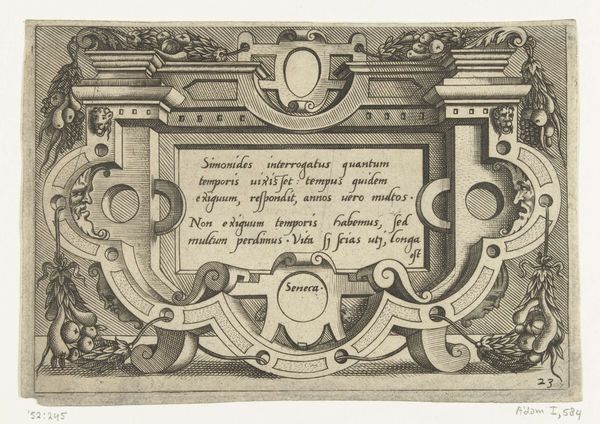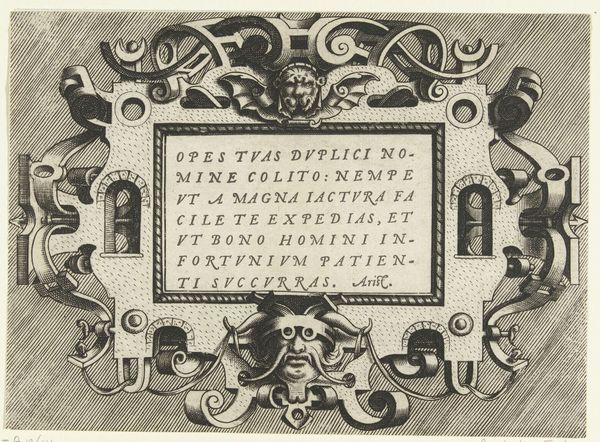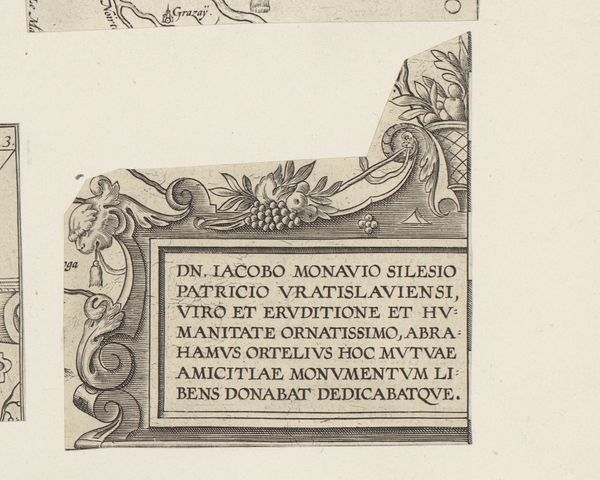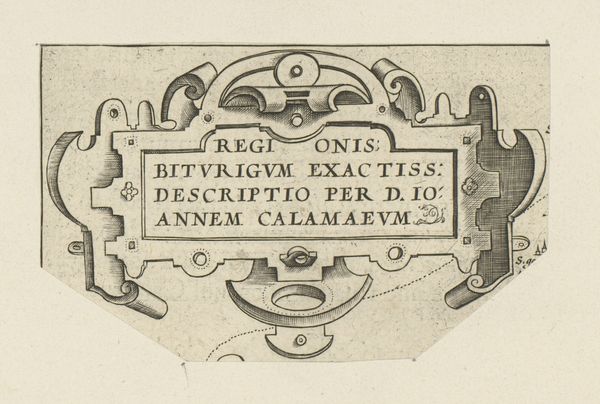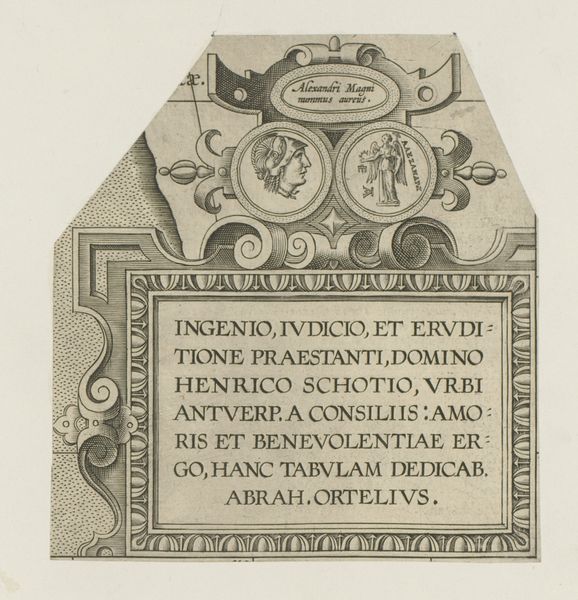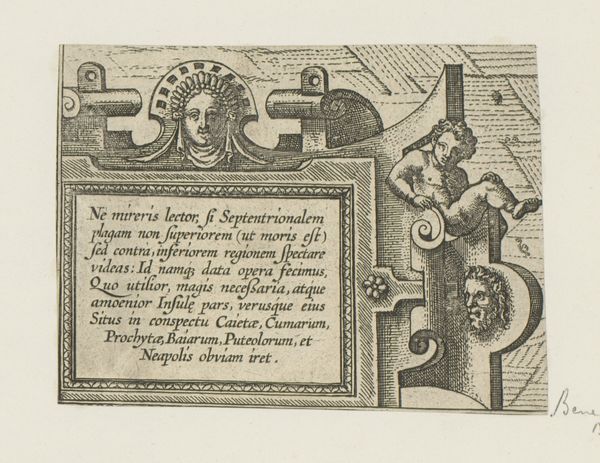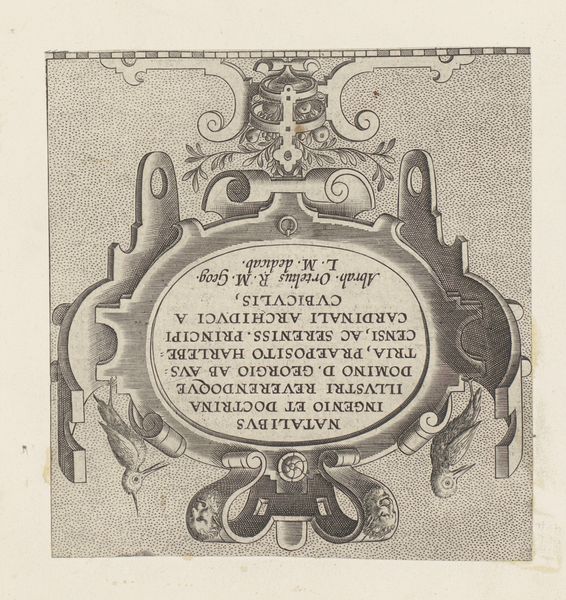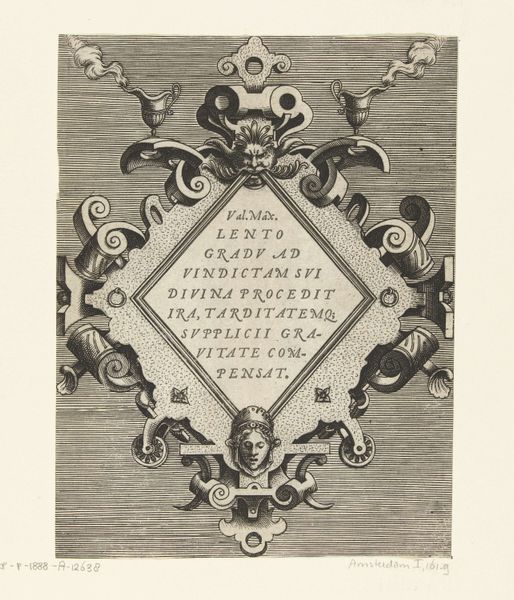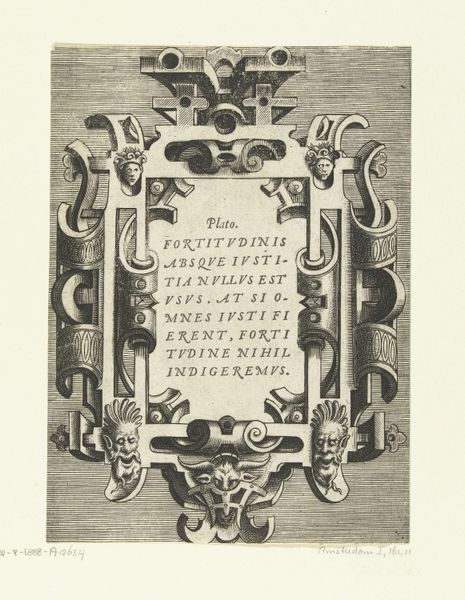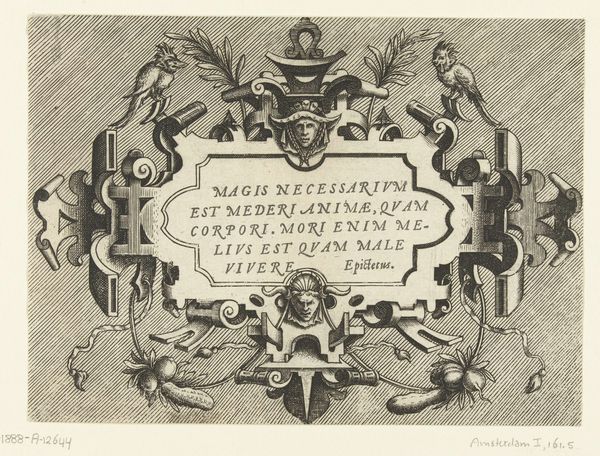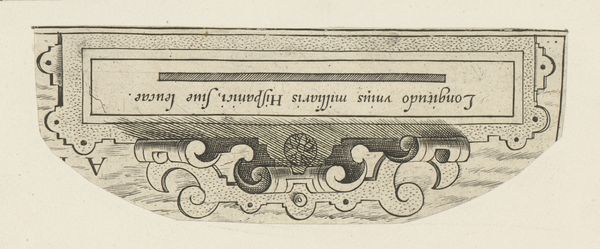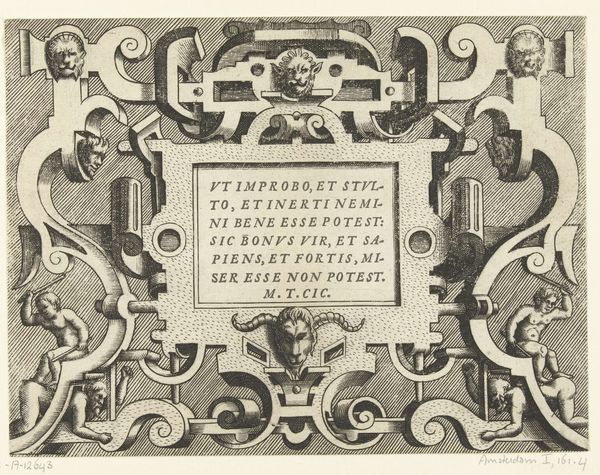
print, engraving
# print
#
old engraving style
#
figuration
#
11_renaissance
#
geometric
#
history-painting
#
engraving
Dimensions: height 67 mm, width 134 mm
Copyright: Rijks Museum: Open Domain
Curator: This engraving, "Cartouche met twee hermen," likely created between 1586 and 1590 by an anonymous artist, presents a striking image for its time. What strikes you most immediately? Editor: It's the stark contrast, isn't it? The darkness of the engraved lines against the paper creates a high-contrast tableau, very dramatic. And the Herms themselves—those winged, half-human figures—frame the text in such a forceful way. Curator: Indeed. The text itself is crucial. Note how it commemorates Benito Arias Montano, a theologian admired by Abraham Ortelius. This reveals much about the intellectual circles of the time, with Ortelius being a cartographer and humanist. It also showcases the public role of prints as vehicles for honoring individuals and cementing social bonds. Editor: Absolutely. And observe the formal repetition: the mirrored Herms, the rectangular frames building towards the central inscription, the circular details beneath the Herms which each contain a sun and a moon face, respectively. Semiotically, the sun and moon represent opposite symbols in one cartouche, conveying that it will contain opposite ideas or peoples to bring into unison and community under theology. All this geometric repetition creates visual harmony but the stark linework of the engraving produces a rather austere final affect. Curator: That austerity speaks volumes, aligning with the period’s religious and political climate. Spain controlled the region then, and Counter-Reformation values influenced artistic production. This cartouche, beyond its aesthetic qualities, functioned within that network of power and patronage. Editor: A very successful engraving on balance then, creating dynamic forms, rich semiotic content and clear messaging all through such constrained choices in color, scale and subject! Curator: It exemplifies how prints in that era served to connect individuals, solidify social standing, and propagate influential ideas. This understanding enriches how we view and value the object today.
Comments
No comments
Be the first to comment and join the conversation on the ultimate creative platform.
